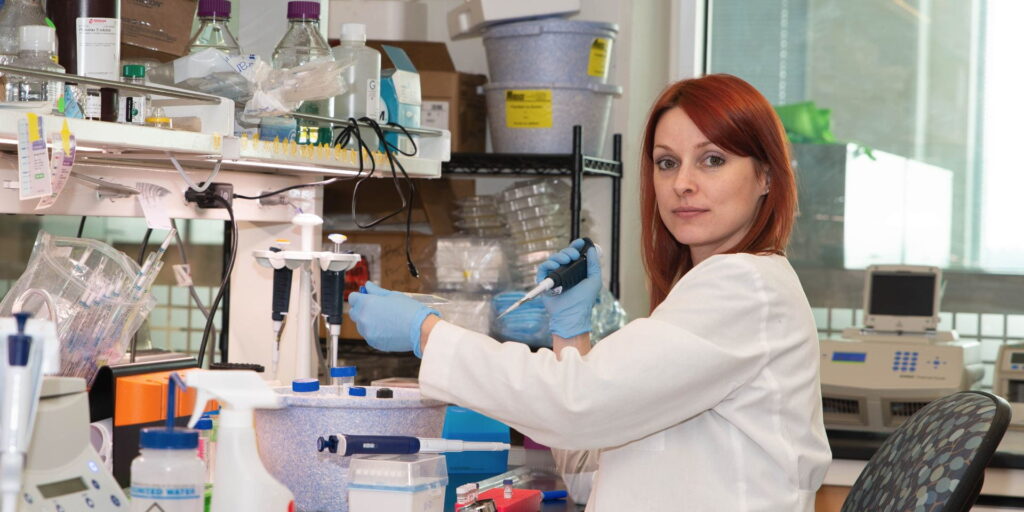Sid Puram, MD, PhD, thinks that optimizing personalized cancer treatment requires better knowledge about tumor heterogeneity. Understanding individual tumor cells will promote better and discrete treatment options for head and neck cancer patients.
Head and neck tumors are composed of a variety of cells that have different functions, much like bees in a hive. Some cells are like drone bees, responsible for expanding and growing the colony (or in this case, tumor). Others are responsible for directing and orchestrating the tumor like a queen bee. Still others mimic worker bees who travel outside the hive and spread the cancer. The different cells in a tumor work together to keep the tumor alive and growing.
This diversity, or heterogeneity, of cells can be driven by unique genetic mutations in specific cells, selective expression of different genes, or reversible marks on the genome called epigenetics. This heterogeneity leads to three challenges to cancer treatment—metastasis, local tumor growth, and treatment failure. Further understanding of the biology surrounding these processes may improve treatment options for head and neck cancer patients.
Until now, genetic sequencing studies in head and neck cancer have largely been limited to a bulk sequencing approach using large samples of dissected tumor tissue.
“This technique does not allow a detailed analysis of individual cells and their unique expression states,” says Dr. Sid Puram, assistant professor in the Department of Otolaryngology—Head & Neck Surgery. “Our laboratory has been pioneering the use of single cell sequencing of head and neck cancers to capture the distinct genes expressed by thousands of individual cells within a tumor. We hope to establish a library of single cell data for hundreds of head and neck squamous cell carcinoma tumors.”
Puram feels this library would provide an important resource for researchers around the world and provide the first glimpse of heterogeneity between different tumor sub sites in head and neck cancers. He is particularly interested in how tumor heterogeneity may differ among the varied sites of the upper aero digestive tract; tumors caused by Human Papilloma Virus (HPV+) versus those that are not (HPV-); and treatment-responsive versus treatment-resistant tumors.
“By establishing this encyclopedia of single cells across numerous tumors, our efforts should help define a true atlas of this disease, providing critical insights into some of the most persistent challenges in diagnosis and treatment,” says Puram.
In just a short few months, more than 25 tumors have already been collected, processed, and sequenced. Early analyses suggest they are capturing a broad array of different cells types, with high quality data. They should reveal important insights once the full cohort is established.
“These efforts are not without challenges,” says Puram. “We experience difficulty collecting rare tumors of the head and neck such as hypopharynx tumors, and data variations that arise from processing tumors on different days (known as batch effect) require computational correction.”
Puram insists they are well positioned to overcome these challenges due to previous experience and some insightful collaborators. Further, the high volume of cancer cases at BJC will allow them to capture the full array of tumors in head and neck cancer while working efficiently towards the goal of completing the atlas.
This major undertaking is dependent on a group of very talented individuals in the laboratory who have carefully honed their skills working with these tissues and techniques over the past two years. Fudong Wang, PhD, and Robert Crowder, PhD, are spearheading experimental efforts, with assistance from graduate students Marina Nogueira and Yi-Hsuan Chang and medical student Reilly Sample. The lab also works closely with Li Ding, PhD, and her team in the Department of Genetics.
“Our hope is that through all this work, we can one day make a major impact on the way patients are diagnosed and treated for head and neck cancer,” says Puram.
To learn more about ongoing work in the Puram lab, please contact Sid Puram, MD, PhD.
